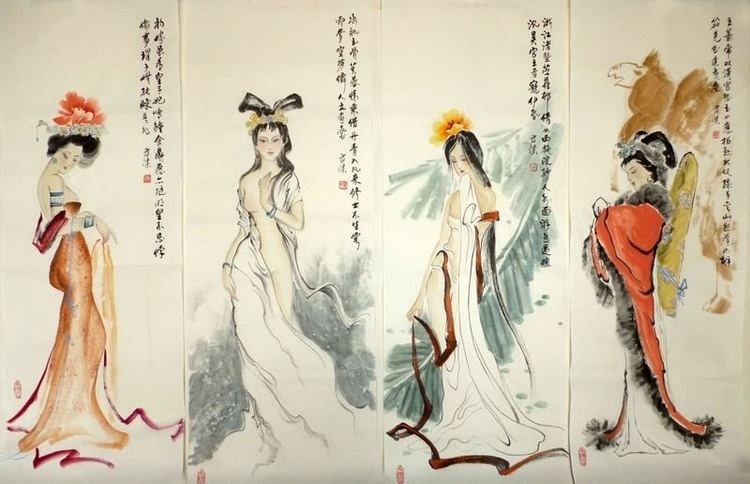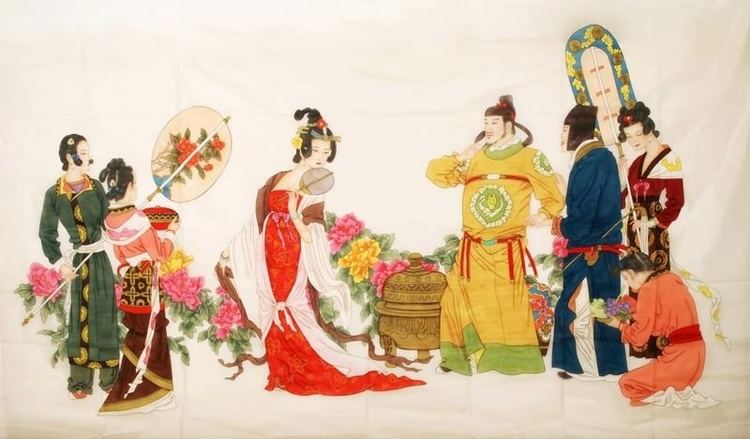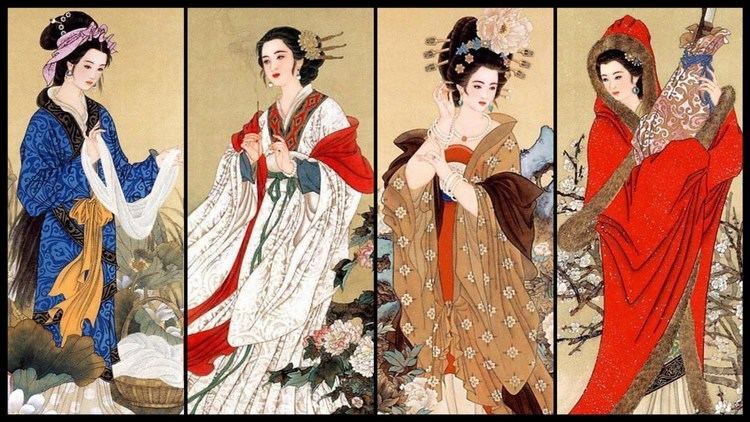Chinese 四大美女 Jyutping sei3 daai6 mei5 neoi5 Chinese 四大美人 | Hanyu Pinyin Hokkien POJ sì tāi bí-lú Hanyu Pinyin | |
 | ||
Chinese four beauties
The Four Beauties or Four Great Beauties are four ancient Chinese women, renowned for their beauty. The scarcity of historical records concerning them meant that much of what is known of them today has been greatly embellished by legend. They gained their reputation from the influence they exercised over kings and emperors and, consequently, the way their actions impacted Chinese history. Three of the Four Beauties brought kingdoms to their knees and their lives ended in tragedy.
Contents

The Beauties
The Four Great Beauties lived in four different dynasties, each hundreds of years apart. In chronological order, they are:

Idiom
Well-known idioms describe the Four Beauties. The exact origin of these idioms is debated.
These separate idioms are sometimes merged to describe especially beautiful women or simply to refer to the Four Beauties' legendary good looks. The merged idiom is 沉魚落雁, 閉月羞花 (sinks fish and entices birds to fall, eclipses the moon and shames flowers); the two parts can also be used separately.
